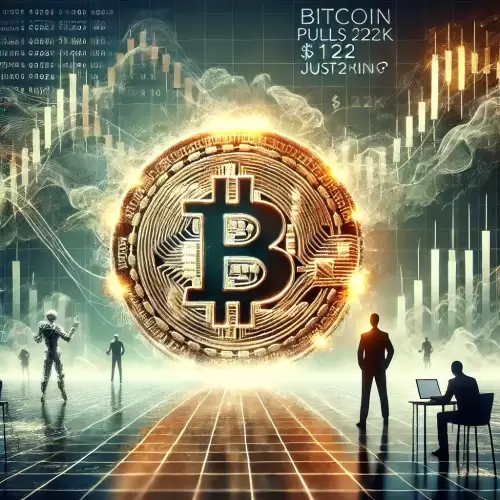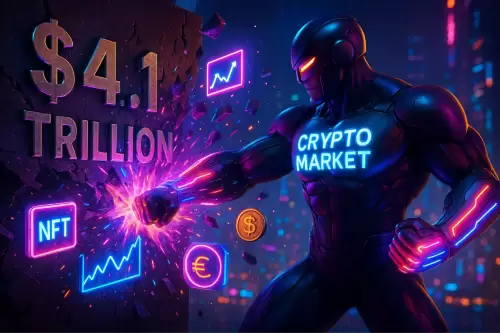 |
|
 |
|
 |
|
 |
|
 |
|
 |
|
 |
|
 |
|
 |
|
 |
|
 |
|
 |
|
 |
|
 |
|
 |
|
Cryptocurrency News Articles
DePIN, Shared Infrastructure, New Era: Building the Future, Together
Jun 20, 2025 at 01:40 am
DePINs are revolutionizing infrastructure, empowering individuals to build a decentralized world with blockchain and shared resources. Discover the trends and insights driving this new era.

DePIN, Shared Infrastructure, New Era: Building the Future, Together
The infrastructure game is changing, folks! DePIN (Decentralized Physical Infrastructure Networks) are here to shake things up. Instead of massive corporations calling all the shots, DePIN empowers everyday people to build the future using blockchain, tokens, and a whole lotta community spirit. It’s about shared infrastructure and a new era of decentralized power. Think crypto meets construction, with a dash of rebellion.
What's the Deal with DePIN?
DePIN is all about using tokenization to get everyone involved in building and maintaining infrastructure. Forget mega-corporations dropping billions on data centers. DePIN lets you contribute with your gaming rig or that spare solar panel, earning crypto while building real-world infrastructure.
Got unused storage space or bandwidth? Chip in and get rewarded with digital tokens. It's like renting out your Wi-Fi router to fuel a revolution! The big players in the DePIN world are cloud storage networks (think decentralized Google Drive), wireless networks (like 5G or sensor nets), and energy networks (connecting solar panels for a resilient grid). Projects like Filecoin and Arweave are leading the charge.
Why DePIN is a Game Changer
DePIN isn’t just hype; it’s solving real problems. Traditional infrastructure is slow, expensive, and often ignores local needs. DePIN offers a people-powered network with no middleman, thanks to blockchain. It’s faster, cheaper, and more community-focused. StorX Network, recently recognized as a Top 25 DePIN Leader, is a prime example, offering secure, affordable, and censorship-resistant cloud storage.
The Flywheel Effect: DePIN's Secret Weapon
DePIN has this cool thing called the flywheel effect. Investors fund projects, builders join in, infrastructure gets built, users pay to use it, and the token value rises. It's a self-sustaining cycle that keeps the momentum going. Take Helium, the "People’s Network," where folks set up hotspots, earn tokens, and expand the network. More users, more demand, more tokens – you get the idea.
Navigating the Hurdles
DePIN isn’t all sunshine and rainbows. It's going head-to-head with Web2 giants like Amazon and Google, who have deep pockets. DePIN needs to be agile and community-driven to compete. Tokenomics can be tricky too. If incentives aren’t good enough, contributors might bail. And let’s not forget regulation. Governments love to meddle, and decentralized networks can ruffle feathers.
The Future is Bright
Despite the challenges, DePIN has serious potential. Projects like Filecoin, Helium, and Render are already showing what’s possible, from decentralized storage to GPU sharing for AI. Analysts predict DePIN could be a multi-billion-dollar sector by 2030, infiltrating everything from smart cities to renewable energy.
Imagine a world where your EV battery powers your neighbor’s AC, and you both get paid in tokens. Or where rural areas get 5G without begging telecoms. DePIN is about fairness and empowerment, not just tech.
Final Thoughts
DePIN is breaking ground, literally. It’s a chance to ditch the old ways and embrace a decentralized, community-driven future. Sure, there’s work to do, but the vision’s clear: a world where everyone benefits from the infrastructure they own. So, buckle up, buttercup, because the future of infrastructure is looking pretty darn decentralized!
Disclaimer:info@kdj.com
The information provided is not trading advice. kdj.com does not assume any responsibility for any investments made based on the information provided in this article. Cryptocurrencies are highly volatile and it is highly recommended that you invest with caution after thorough research!
If you believe that the content used on this website infringes your copyright, please contact us immediately (info@kdj.com) and we will delete it promptly.






























































